Building of the Day: 495-513 Classon Avenue
Brooklyn, one building at a time. Name: Church of the Nativity of Our Blessed Lord, now Elim Gospel Tabernacle Address: 495-513 Classon Avenue Cross Streets: Corner Madison Street and Putnam Avenue Neighborhood: Bedford Stuyvesant Year Built: 1915 Architectural Style: Romanesque Architect: Raymond Almirall Other Buildings by Architect: St. Michael’s Church, Sunset Park, Pacific St. Branch,…
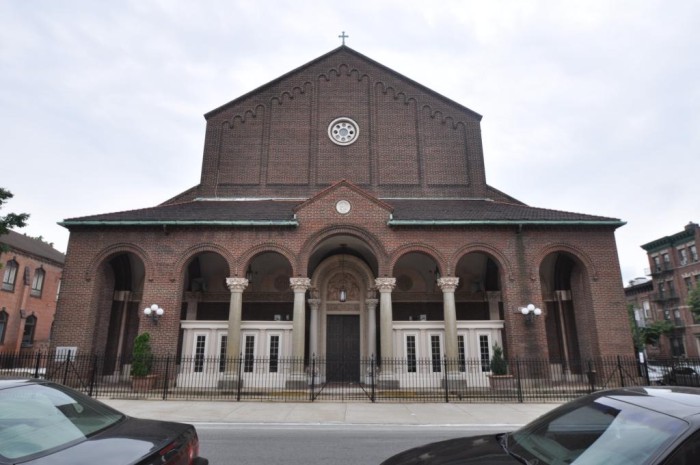

Brooklyn, one building at a time.
Name: Church of the Nativity of Our Blessed Lord, now Elim Gospel Tabernacle
Address: 495-513 Classon Avenue
Cross Streets: Corner Madison Street and Putnam Avenue
Neighborhood: Bedford Stuyvesant
Year Built: 1915
Architectural Style: Romanesque
Architect: Raymond Almirall
Other Buildings by Architect: St. Michael’s Church, Sunset Park, Pacific St. Branch, Brooklyn Public Library, Public Bath #7 (Lyceum), Chapel at Calvary Cemetery, Queens, Emigrant Savings Bank Building, Lower Manhattan, hospitals, churches, in NYC.
Landmarked: No
The story: Raymond Almirall was a fine architect and a good son of Brooklyn. Over the course of his career, he designed many churches, hospitals, libraries and buildings for the Catholic Church and for the city he loved. Although most people may not know his name, his buildings are well known by Brooklynites, as they are a prominent part of our city landscape.
Almirall graduated from Brooklyn’s Polytechnic Institute, and then went on to get a degree in architecture from Cornell University. From there, he went on to study at the prestigious L’Ecole des Beaux-Arts in Paris. When he came back from Europe, he went to work with architect John V. Ingle, and Almirall’s first professional project was the City Hall for Binghamton, NY. After that project, he put out his shingle and began designing on his own.
His career was full of great and important civic and religious projects, all influenced by his study of the great buildings and styles of the past. He was a very devout Catholic, and designed several churches in Brooklyn. His first church was St. Michael’s Church on Fourth Avenue in Sunset Park, built in 1905. It rises up over the neighborhood with a distinctive beehive shaped tower. Almirall kept with that theme, referencing Byzantine and Middle Eastern architecture in his next projects, the chapel for Calvary Cemetery in Queens, and this church, Church of the Nativity of the Blessed Lord, in Bedford.
This Irish parish was established in 1871 in the growing community of western Bedford. They worshiped in a building at this same location. By the first decade of the 20th century, the parish had grown and needed a new church. Like most Catholic parishes, in addition to the church, they also had established a rectory and an elementary school.
The design of the Church of the Nativity references the early churches of Italy. The church is a classic cruciform inside with a large semi-circular apse which holds the altar. It’s a Romanesque building, with running arches, classical columns and a very early Christian basilica style interior. It is a large, beautiful building that takes up the entire block of Classon Avenue between Madison Street and Putnam Avenue.
The church served the area’s large Irish Catholic population. Unfortunately for the mission and history of the Church, the hierarchy of the diocese was not interested in joining all Catholics. Each ethnic Catholic group worshiped separately, and there was little mixing of Germans, Italians, Irish, and others in one parish. When African-American Catholics tried to worship in local churches, they were turned away. Rev. Bernard Quinn, who had spent his career working with black people, petitioned for a church for black Catholics in Brooklyn. He was finally given permission to build St. Peter Claver Church, only three blocks from Church of the Nativity. The year was 1921.
Father Quinn turned out to be a firebrand, and an amazing organizer. He organized a special prayer service called the Little Flower Novena that drew Catholics to St. Peter Claver from all over Brooklyn. It was so popular that people began to leave Church of the Nativity, and the people there started to complain. It appears that God don’t like ugly. As the population shifted in Brooklyn, St. Peter Claver continued to grow, and Nativity began to shrink.Finally, in 1973, the diocese closed Church of the Nativity, and merged its congregation with St. Peter Claver.
The diocese sold the church buildings to a Pentecostal church called the Elim Gospel Tabernacle. Elim considered the Catholic iconography in the church to be “heathen” and tore out anything remaining that was overtly Catholic. I met a woman on a city bus once who told me they worked diligently to rid the building of saints and other improper influences. Today, Almirall’s Church of the Nativity is Catholic only on the exterior.
(Photograph:Christopher Bride for PropertyShark)
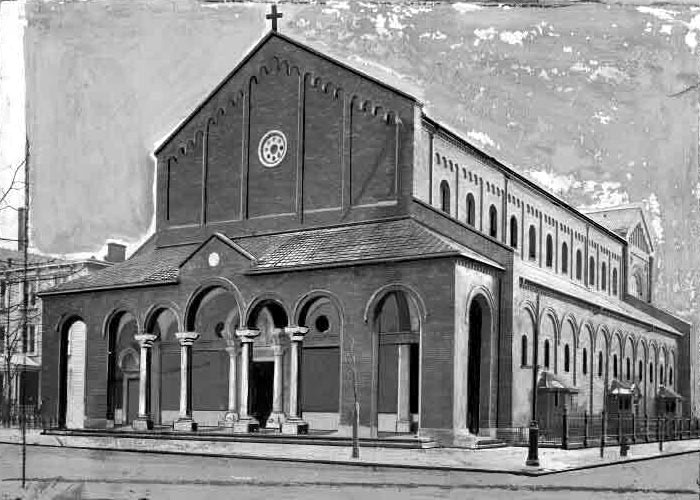
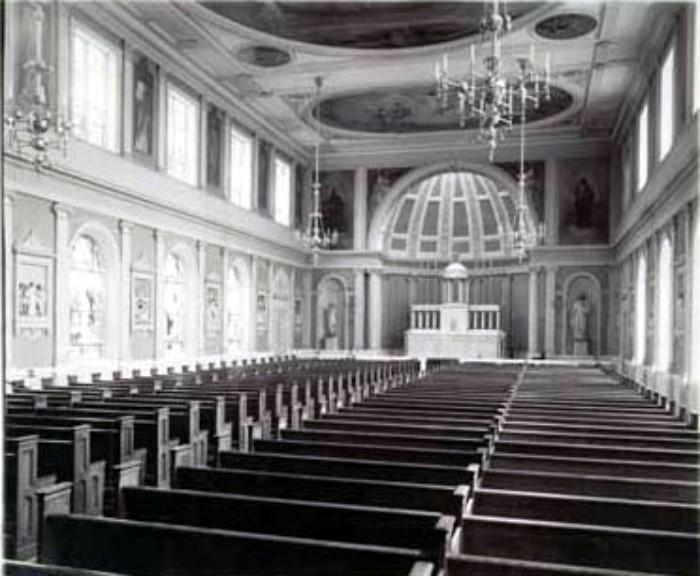
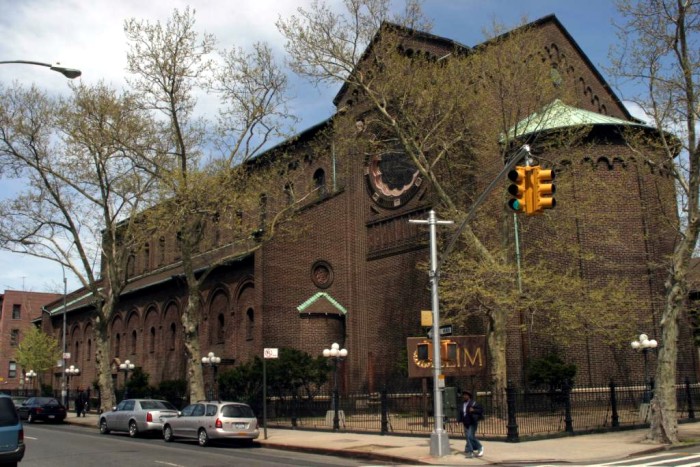
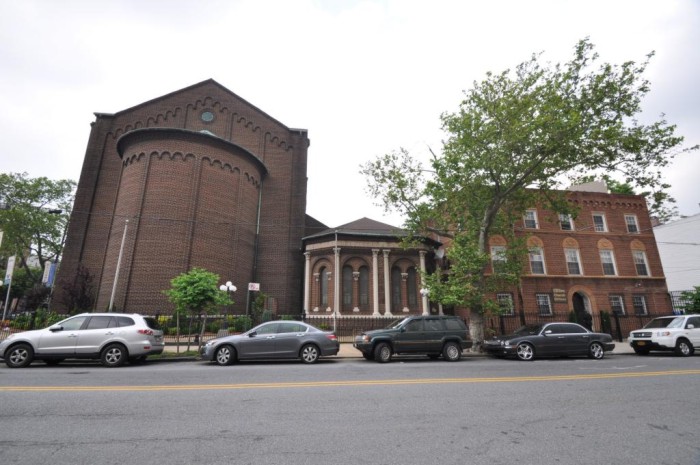
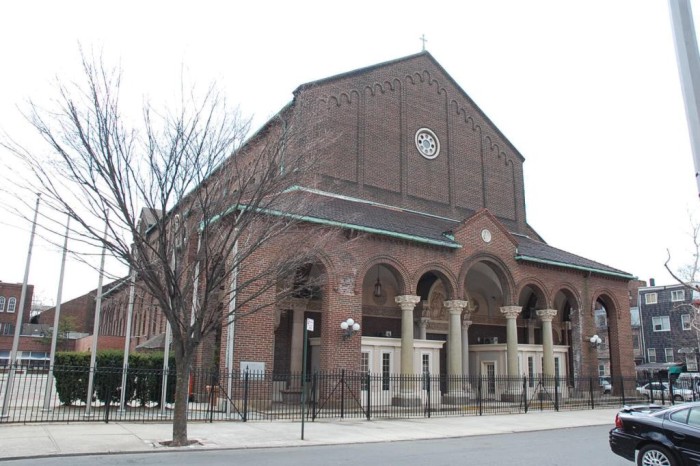




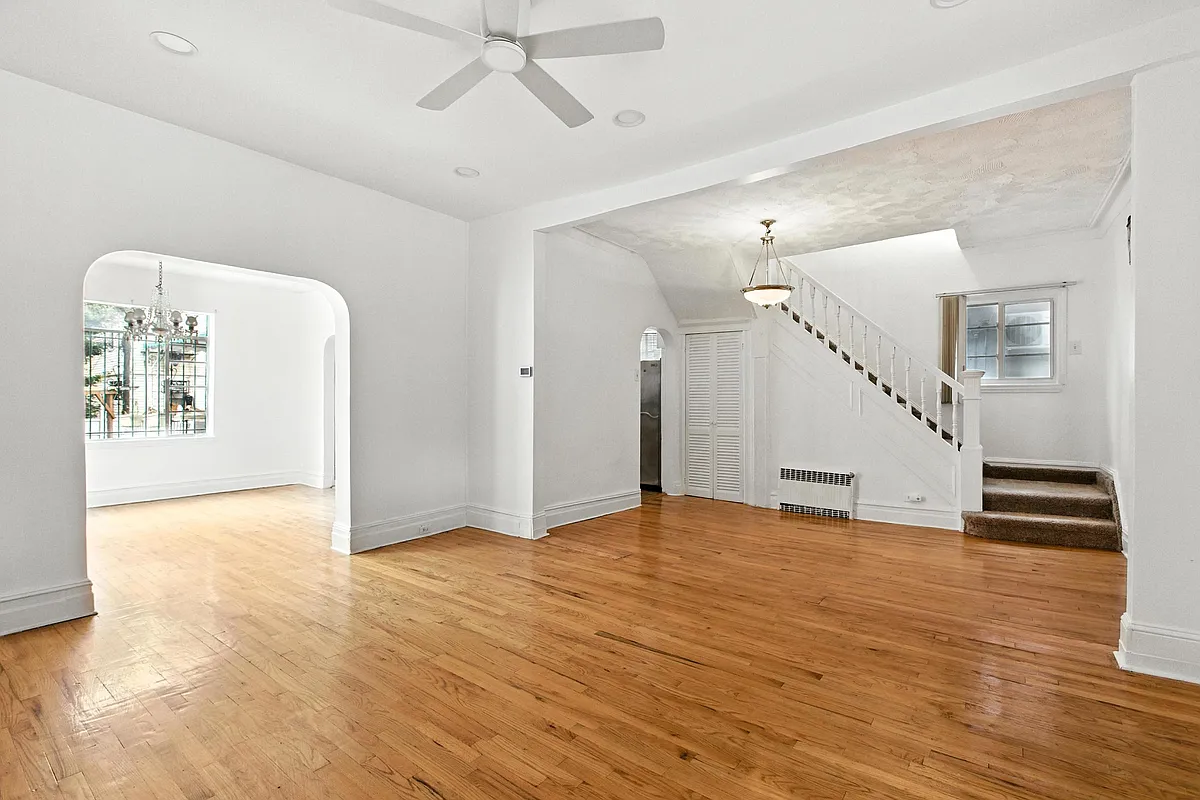
What's Your Take? Leave a Comment